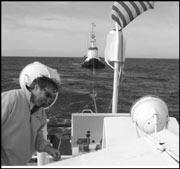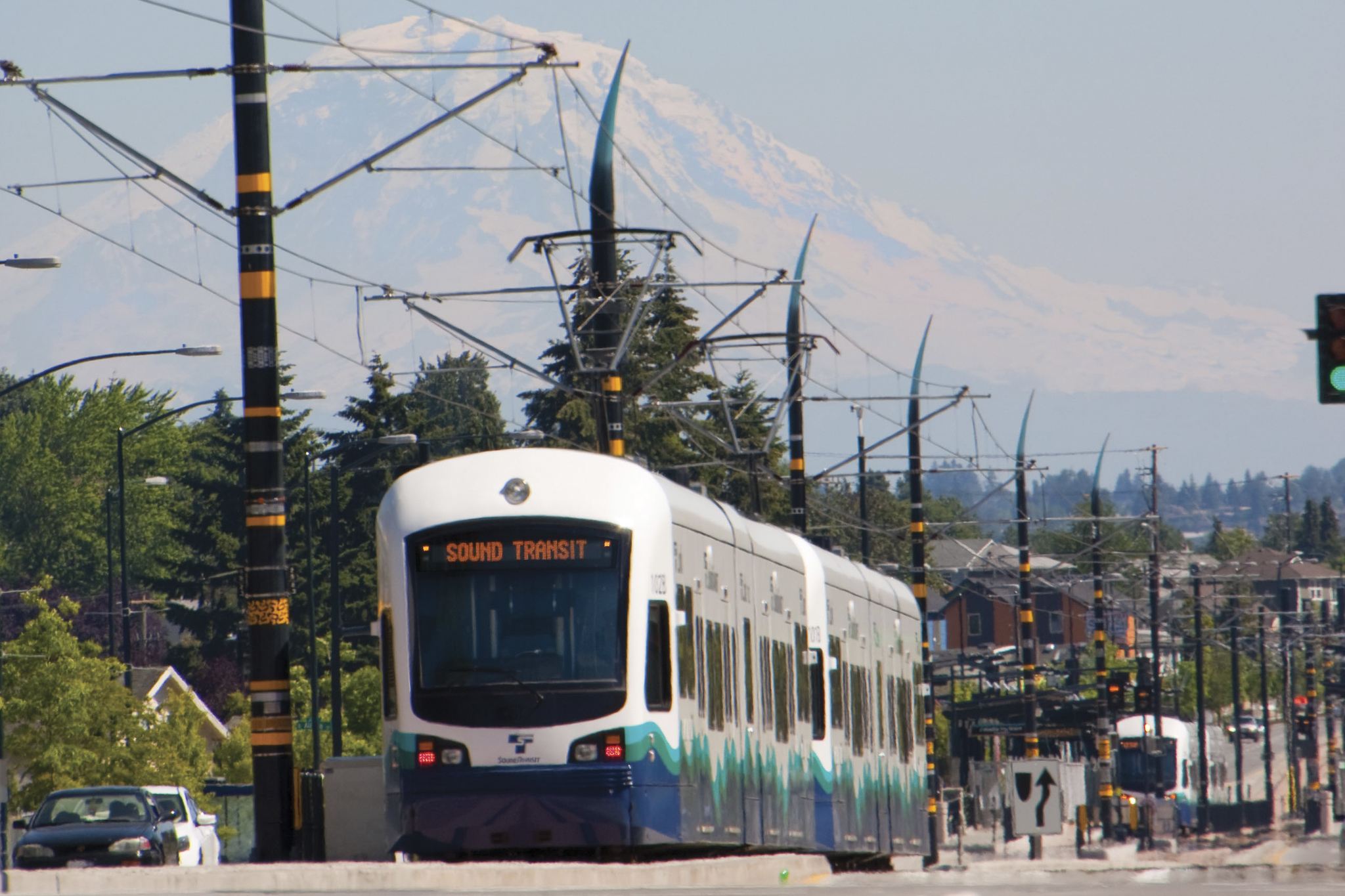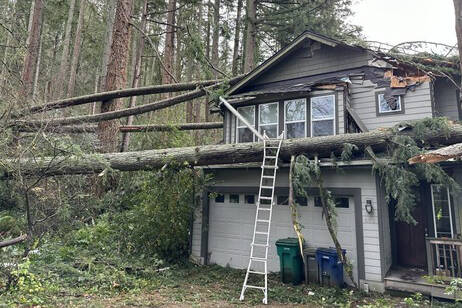Everybody originally expected it to be a tugboat. Last spring, Sen. Patty Murray, D-Wash., talked about getting federal money to keep a rescue tug stationed at Neah Bay, at the far northwestern tip of the state. It was a measure fervently sought by those who would suffer most should a drifting tanker pull an Exxon Valdez on Washington’s wildest, most pristine shoreline. The $1.6 million appropriation Murray got passed (pending final budget approval) specifically mentions a rescue tug. But it leaves a loophole: It defers to the agency in the field, giving the Coast Guard discretion to spend the money as its captain of the Port of Seattle thinks best. And if the Coast Guard’s past stance is a guide, what’s “best” won’t be a rescue tug.
Most local authorities love the idea of stationing a rescue tug near the mouth of the Strait of Juan de Fuca, where ships enjoy much less protection from the vagaries of engines, winds, and currents than they have in Puget Sound. Washington state, San Juan County, the Makah Tribe, and various Olympic Peninsula governments have pushed for it, as have various marine- conservation advocacy groups. For each of the past four winters, the state, with occasional federal help, has put up about $1.6 million to station a tug at Neah Bay. But that money was catch-as-catch-can even before the state fell into fiscal crisis. And it’s been strictly an October-to-April romance. There was no money to keep the tug stationed there in the warm months, when disasters are less likely but still possible.
And not everyone loves the rescue tug. The shipping industry, which fears getting stuck with the tab for it, argues that it’s a costly, wasteful means to an end that can be achieved for much less. The shippers have promoted the “international tug of opportunity” (ITOS) system they inaugurated in 1997, which acts as a sort of police dispatcher of the high seas, tracking all tugs via radio transponders and sending those that are closest and unengaged to help in emergencies.
The Coast Guard has tended to agree with the shippers, favoring ITOS and other lower-cost approaches, such as deploying standby tugs when gales hit. “The Coast Guard isn’t for or against the rescue tug,” says Commander Bill Devereux, who heads the Vessel Traffic Service. “It just questions if that’s the best way to spend money. There are much more cost-effective things you can do.”
Kathy Fletcher, executive director of People for Puget Sound, is unimpressed by such declarations of neutrality. “Not only doesn’t the Coast Guard want to spend money on the tug, it’s even testified against the state spending money on the tug. Clearly their bias is against it.”
Now, with the Murray money pending, the Coast Guard is opening the question up again. This month, it distributed a survey to shippers, activists, and other interested parties, asking what they see as “the top five threats to the environment” and “top five preventative measures to minimize [those] threats.” Devereux, who’s conducting the survey, hopes to get “good analysis” and “new ideas” on how to prevent spills.
Rescue-tug boosters, who have for years accused the Coast Guard of dragging its feet and stacking the data against a dedicated tug, fear more of the same now. It does seem late in a very long debate to be starting from scratch. But a new captain of the Port has just been installed (his predecessor now directs the local shippers’ industry group), and Stan Norman, who manages the state’s oil-spill-prevention program, figures the new chief just “wants to know what people think. He says he will take into account all of the 171 recommendations made by previous reports. We’ll certainly send him all of them.”
Murray’s spokesperson Todd Webster says she is pleased to see that “the captain of the Port is reaching out to all stakeholders,” and is confident that the Coast Guard is following the spirit of the appropriation. Activist Fletcher likewise applauds this “openness and willingness to talk.” Best of all, she adds, the Coasties are reaching beyond the usual inside sources on their standing advisory body, the Puget Sound Harbor Safety and Security Committee (with the “Security” added after Sept. 11, 2001). “I’m glad they’re not just talking to the committee, which is very industry dominated.”
CAPT. BILL ARCHER, who currently commands the rescue tug Barbara Foss at Neah Bay, thinks it’s “ridiculous” to undertake more studies now. “What they need to do is station something out here that can prevent trouble. I think we’ve proven we can do that.” Archer got another chance to prove that just half an hour after he arrived to start his first tour of the season, just two weeks ago—and, as it happened, an hour or two after the Coast Guard announced its new survey at a Harbor Safety Committee meeting. A Seattle tug was towing an oil barge loaded with more than 3 million gallons of fuel (about one-third what the Exxon Valdez spilled) through the Strait of Juan de Fuca, a mile and a quarter from shore, when it lost all power in one of its two engines and nearly all power in the other. To complete the perfect storm, the tug’s engineer was stricken with chest pains (he was later off-loaded). The Barbara Foss towed the disabled tug and barge back to Port Angeles.
State officials concluded later that the barge wouldn’t have wrecked and spilled, that other help would eventually have arrived. But in four seasons, the rescue tug has gone to the aid of 18 other disabled vessels. “Whether it’s made a save is controversial,” says the Coast Guard’s Devereux. “It’s only rarely actually towed anyone.” But Archer is confident that he’s made at least two bona fide rescues that might otherwise have become disasters. One was of a decommissioned supertanker holding a million gallons of oil that drifted off the ocean coast for five days before the Barbara Foss caught it. The other was a grain ship that lost power off Cape Flattery, which Archer’s crew snagged and towed to Victoria.
When ships go drifting off the stormy cape and ocean coast, the Neah Bay tug may be the only help that can reach them. The nearest commercial tugs are stationed at Port Angeles, four to five hours from Neah Bay and five to six hours from Cape Flattery. Transiting tugs are more common in the inland waters of Puget Sound, where ITOS works better (and where tankers must have tug escorts). But they’re scarce to nonexistent along the outer strait and ocean coast, where escorts aren’t required.
Devereux compares the rescue tug to a pedestrian overpass that spares people from crossing in traffic. “No one got killed after it was built,” he says. “So did it work?” You can’t know what would otherwise have happened. Four years ago, the New Carissa smashed up on the Oregon coast because no help could reach it in time. Meanwhile, we haven’t had any wrecks in Washington since the tug’s been at Neah Bay.
Devereaux and Fletcher do echo each other on one point: With money available, the onus is now on the Coast Guard to come up with something better than the rescue tug, or finally embrace it. “The question,” says Fletcher, “is whether they can overcome their bias.”
SPEAKING OF BIG SHIPS—AND WHALES . . .
A necropsy has determined that the fin whale splayed on the bow of an Alaskan tanker arriving at Cherry Point Oct. 2 (see “Finback Fini,” Oct. 9) was alive when the ship struck her. She was a 60-foot adult female with no evident signs of toxicity or starvation.
Meanwhile, Fisheries and Oceans Canada has decided not to move Luna, a 3-year-old orca from Washington’s L-Pod, from Nootka Sound on Vancouver Island, where he’s been stuck for a year and a half (see “Overjoyed Orca,” Oct. 2). Whale advocates and outside scientists had urged reuniting him with his family and pod before they move to the open ocean for the winter—and before meddling human fans domesticate him even more. But Canadian officials feared that if he didn’t manage to rejoin the pod, he might be stranded in less fertile and protected waters than Nootka Sound. Fish stocks there are holding up, for now.









